Cartilage
Cartilage is a flexible, semi-rigid connective tissue found in various parts of the body. It is made up of specialized cells called chondrocytes, which are surrounded by a firm gel-like substance called the extracellular matrix. Cartilage is essential for providing support and structure to the body, especially in areas where flexibility and resilience are needed.
Types of Cartilage:
- Hyaline Cartilage: Found in the nose, respiratory passages, and at the ends of long bones, providing a smooth surface for joint movement.
- Elastic Cartilage: Contains elastic fibers and is found in the external ear and parts of the larynx, allowing for flexibility and maintaining shape.
- Fibrocartilage: Contains strong collagen fibers and is found in the intervertebral discs, pubic symphysis, and in certain tendons, providing support and cushioning.
Functions of Cartilage:
- Support: Provides a framework for various body structures.
- Protection: Acts as a cushion for joints and prevents bone-to-bone contact.
- Growth: Contributes to the growth of long bones in children by serving as a template for bone formation.
- Flexibility: Allows for smooth movement of joints and maintains the shape of certain structures.
Study Guide:
When studying cartilage, it's important to understand its structure, types, functions, and locations in the body. Here are some key points to focus on:
- Identify the three types of cartilage and their respective locations in the body.
- Explain the role of chondrocytes and the extracellular matrix in cartilage function.
- Describe how cartilage supports, protects, and provides flexibility in the body.
- Compare and contrast the properties of hyaline, elastic, and fibrocartilage.
- Discuss the importance of cartilage in bone growth and development.
Understanding the significance of cartilage in the body and its various functions will provide a solid foundation for further exploration of this essential tissue.
.◂Science Worksheets and Study Guides Second Grade. Water Habitats
Study Guide Water Habitats
Water Habitats  Activity Lesson
Activity Lesson Water Habitats
Water Habitats  Worksheet/Answer key
Worksheet/Answer key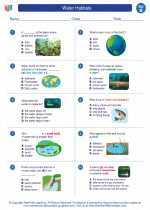 Water Habitats
Water Habitats  Worksheet/Answer key
Worksheet/Answer key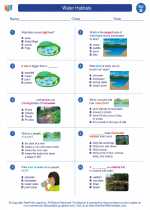 Water Habitats
Water Habitats  Worksheet/Answer key
Worksheet/Answer key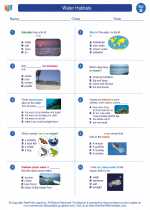 Water Habitats
Water Habitats  Worksheet/Answer key
Worksheet/Answer key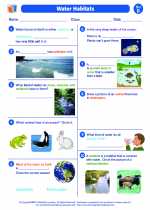 Water Habitats
Water Habitats  Vocabulary/Answer key
Vocabulary/Answer key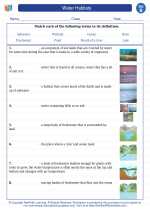 Water Habitats
Water Habitats  Vocabulary/Answer key
Vocabulary/Answer key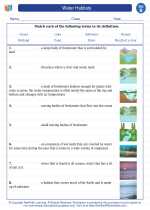 Water Habitats
Water Habitats 

 Activity Lesson
Activity Lesson
 Worksheet/Answer key
Worksheet/Answer key
 Worksheet/Answer key
Worksheet/Answer key
 Worksheet/Answer key
Worksheet/Answer key
 Worksheet/Answer key
Worksheet/Answer key
 Vocabulary/Answer key
Vocabulary/Answer key
 Vocabulary/Answer key
Vocabulary/Answer key

The resources above cover the following skills:
LIFE SCIENCE (NGSS)
Biological Evolution: Unity and Diversity
Students who demonstrate understanding can:
Make observations of plants and animals to compare the diversity of life in different habitats[Clarification Statement: Emphasis is on the diversity of living things in each of a variety of different habitats.] [Assessment Boundary: Assessment does not include specific animal and plant names in specific habitats.]